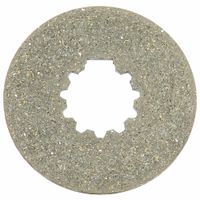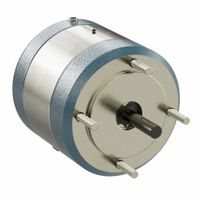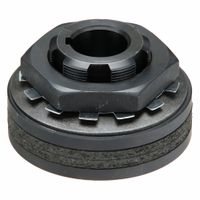Call +(254) 703 030 000 / 751 483 999 / 721 704 777
- Home
- Power Transmission
- Brakes Clutches Torque Limiters
.....Read More
Frequently Asked Questions
What are the main differences between brakes and clutches?
Brakes and clutches are both mechanical devices used to control motion, but they serve different purposes and operate in distinct ways.
Brakes are designed to stop or slow down motion. They work by applying friction to a moving part, typically a wheel or a shaft, converting kinetic energy into heat, which dissipates into the environment. Brakes are commonly used in vehicles, machinery, and various equipment to ensure safety and control. They can be found in different types, such as disc brakes, drum brakes, and electromagnetic brakes, each suited for specific applications. The primary function of brakes is to halt motion, providing stability and control.
Clutches, on the other hand, are used to engage or disengage the power transmission between two rotating shafts. They allow for the controlled connection and disconnection of the engine from the drivetrain in vehicles, enabling smooth gear changes and the ability to start and stop without stalling the engine. Clutches can be found in manual transmissions, automatic systems, and various machinery. Types of clutches include friction clutches, hydraulic clutches, and electromagnetic clutches. The main function of a clutch is to manage the transfer of power, allowing for controlled acceleration and deceleration.
In summary, the main differences between brakes and clutches lie in their functions and applications. Brakes are used to stop or slow down motion by applying friction, while clutches are used to engage or disengage power transmission between rotating components. Brakes ensure safety and control by halting motion, whereas clutches facilitate smooth power transfer and gear changes.
How do brakes and clutches work in rotary applications?
Brakes and clutches in rotary applications function by controlling the motion and torque of rotating components, often using friction to achieve their purpose.
**Brakes**: In rotary systems, brakes are used to slow down or stop the rotation of a shaft. They work by applying a frictional force to a rotating element. When the brake is engaged, brake pads or shoes press against a rotating drum or disc attached to the shaft. The friction between the pads and the disc converts kinetic energy into heat, slowing down the rotation. There are various types of brakes, including disc brakes, drum brakes, and electromagnetic brakes, each suited for different applications based on factors like response time, heat dissipation, and maintenance requirements.
**Clutches**: Clutches connect and disconnect two rotating shafts, allowing for controlled engagement and disengagement of power transmission. When engaged, a clutch allows torque to be transferred from a driving shaft to a driven shaft. This is typically achieved through friction plates or discs that press together, transmitting motion and torque. Clutches can be manually operated, as in automotive applications, or automatically controlled, as in machinery. Types of clutches include friction clutches, electromagnetic clutches, and hydraulic clutches, each offering specific advantages in terms of control, speed, and load capacity.
Both brakes and clutches are critical in managing the dynamics of rotary systems, ensuring smooth operation, safety, and efficiency. They are designed to handle specific loads and speeds, and their performance is influenced by factors such as material composition, surface area, and cooling mechanisms. Proper maintenance and material selection are essential to ensure their longevity and reliability in various industrial and automotive applications.
What are the common signs of brake or clutch failure?
Common signs of brake failure include:
1. **Squealing or Grinding Noises**: High-pitched squealing or grinding sounds when applying brakes often indicate worn-out brake pads or shoes.
2. **Vibrations**: If the brake pedal or steering wheel vibrates when braking, it could be due to warped rotors or uneven wear.
3. **Soft or Spongy Brake Pedal**: A brake pedal that feels soft or spongy may indicate air in the brake lines or a problem with the master cylinder.
4. **Longer Stopping Distances**: If the vehicle takes longer to stop than usual, it could be due to worn brake components or a brake fluid leak.
5. **Brake Warning Light**: An illuminated brake warning light on the dashboard can signal various issues, including low brake fluid or a problem with the ABS.
6. **Pulling to One Side**: If the vehicle pulls to one side when braking, it may be due to uneven brake pad wear or a stuck caliper.
Common signs of clutch failure include:
1. **Slipping Clutch**: If the engine revs increase without a corresponding increase in vehicle speed, the clutch may be slipping due to wear.
2. **Difficulty Shifting Gears**: Hard or grinding shifts can indicate a worn clutch or issues with the clutch linkage or hydraulic system.
3. **Spongy or Stiff Clutch Pedal**: A clutch pedal that feels spongy or stiff can be a sign of air in the hydraulic system or a failing clutch master/slave cylinder.
4. **Burning Smell**: A burning smell, especially after heavy use, can indicate a slipping clutch.
5. **Clutch Pedal Stays on the Floor**: If the clutch pedal does not return to its normal position, it may be due to a failed clutch linkage or hydraulic issue.
How do you maintain and service brakes and clutches?
To maintain and service brakes, regularly inspect brake pads and rotors for wear. Replace pads if they are below the manufacturer's recommended thickness. Check brake fluid levels and top up with the correct type if necessary. Bleed the brake system to remove air bubbles, ensuring optimal hydraulic pressure. Inspect brake lines for leaks or damage and replace if needed. Clean brake components to remove dust and debris, which can affect performance. Lubricate caliper slides and other moving parts to prevent sticking. For drum brakes, adjust the brake shoes and inspect the drum for wear.
For clutch maintenance, check the clutch fluid level in hydraulic systems and top up if necessary. Inspect the clutch pedal for proper free play and adjust if needed to ensure full engagement and disengagement. Examine the clutch cable for wear or fraying in cable-operated systems and replace if necessary. Listen for unusual noises when the clutch is engaged or disengaged, which may indicate wear. If the clutch slips or feels spongy, it may need adjustment or replacement. Regularly inspect the clutch disc, pressure plate, and flywheel for wear or damage during servicing. Replace worn components to prevent further damage to the transmission.
Both systems benefit from regular driving habits that avoid excessive wear, such as not riding the brakes or clutch. Regular maintenance checks and timely replacements of worn parts ensure longevity and optimal performance of brakes and clutches.
What are torque limiters and how do they protect machinery?
Torque limiters are mechanical devices designed to protect machinery from damage due to excessive torque. They function by disconnecting the drive from the load when the torque exceeds a predetermined limit, preventing mechanical overloads that can lead to equipment failure.
Torque limiters come in various types, including friction, shear pin, and magnetic. Friction torque limiters use frictional forces between surfaces to transmit torque. When the torque exceeds the set limit, the friction surfaces slip, disconnecting the drive from the load. Shear pin torque limiters use a pin that shears off when the torque exceeds the limit, physically disconnecting the drive. Magnetic torque limiters use magnetic forces to transmit torque, and when the limit is exceeded, the magnetic field is overcome, allowing the drive to slip.
These devices are crucial in protecting machinery by preventing damage to gears, shafts, and other components. They help avoid costly repairs and downtime by ensuring that the machinery operates within safe torque limits. Torque limiters are commonly used in industries such as automotive, manufacturing, and material handling, where machinery is subject to variable loads and potential overload conditions.
By providing a fail-safe mechanism, torque limiters enhance the reliability and longevity of machinery, ensuring smooth and efficient operation. They are an essential component in systems where precise torque control is critical, offering protection against unexpected load increases, jams, or misalignments that could otherwise lead to catastrophic failures.
How do you choose the right brake or clutch for a specific application?
To choose the right brake or clutch for a specific application, consider the following factors:
1. **Application Type**: Determine whether the application is industrial, automotive, or aerospace, as each has specific requirements.
2. **Load Requirements**: Assess the torque and power requirements. Calculate the maximum load the brake or clutch must handle to ensure it can manage the operational demands.
3. **Speed**: Consider the operational speed. High-speed applications may require different materials and designs to handle the increased kinetic energy.
4. **Environment**: Evaluate the operating environment, including temperature, humidity, and exposure to contaminants. This will influence the material choice and design to prevent corrosion or overheating.
5. **Duty Cycle**: Understand the frequency and duration of engagement. Continuous or frequent use may necessitate a more robust design with better heat dissipation.
6. **Size and Weight Constraints**: Ensure the brake or clutch fits within the spatial limitations of the application without adding excessive weight.
7. **Control Method**: Decide between manual, hydraulic, pneumatic, or electric actuation based on precision, response time, and control complexity.
8. **Material**: Choose materials based on friction, wear resistance, and thermal properties. Common materials include organic, metallic, and ceramic composites.
9. **Cost**: Balance performance needs with budget constraints. Higher performance often comes at a higher cost.
10. **Regulatory Compliance**: Ensure the chosen component meets industry standards and safety regulations.
11. **Maintenance and Durability**: Consider the ease of maintenance and expected lifespan. Components with longer service intervals and higher durability may reduce long-term costs.
12. **Supplier Reputation**: Choose reputable manufacturers known for quality and reliability to ensure product support and availability.
By systematically evaluating these factors, you can select a brake or clutch that meets the specific needs of your application.
What are the benefits of using brake and clutch accessories?
Brake and clutch accessories offer several benefits that enhance vehicle performance, safety, and longevity.
1. **Improved Performance**: High-quality brake and clutch accessories, such as performance brake pads and clutch kits, provide better friction and heat resistance. This results in more efficient braking and smoother gear transitions, which are crucial for high-performance and racing vehicles.
2. **Enhanced Safety**: Reliable brake accessories ensure shorter stopping distances and consistent braking performance, reducing the risk of accidents. Clutch accessories that offer precise engagement and disengagement help prevent stalling and ensure better control over the vehicle.
3. **Increased Durability**: Upgraded accessories are often made from superior materials that withstand wear and tear better than standard components. This leads to a longer lifespan for both the brake and clutch systems, reducing the frequency of replacements and maintenance costs.
4. **Customization and Adaptability**: Accessories allow for customization to suit specific driving needs, whether for off-road, racing, or everyday use. This adaptability ensures that the vehicle performs optimally under various conditions.
5. **Heat Management**: Advanced brake and clutch components often include features that improve heat dissipation, preventing overheating and maintaining performance even under strenuous conditions.
6. **Noise and Vibration Reduction**: Quality accessories can reduce noise and vibrations during operation, leading to a more comfortable driving experience.
7. **Cost-Effectiveness**: While the initial investment might be higher, the extended lifespan and reduced maintenance needs of high-quality accessories can lead to cost savings over time.
8. **Environmental Benefits**: Some modern accessories are designed to be more environmentally friendly, producing less dust and emissions, contributing to a cleaner environment.
Overall, using brake and clutch accessories can significantly enhance a vehicle's performance, safety, and efficiency, making them a worthwhile investment for many drivers.
How often should brakes and clutches be replaced or serviced?
Brakes and clutches are critical components of a vehicle's safety and performance, and their maintenance depends on various factors, including driving habits, vehicle type, and environmental conditions.
**Brakes:**
1. **Inspection Frequency:** Brakes should be inspected at least once a year or every 12,000 miles, whichever comes first. However, if you notice any signs of wear such as squeaking, grinding noises, or reduced responsiveness, have them checked immediately.
2. **Replacement Indicators:** Brake pads typically need replacement every 25,000 to 70,000 miles, depending on the material and driving conditions. Rotors may last longer but should be checked for warping or damage.
3. **Servicing Needs:** Regular servicing includes checking brake fluid levels, inspecting brake lines, and ensuring the brake system is free of leaks. Brake fluid should be replaced every 2 years or 20,000 to 45,000 miles.
**Clutches:**
1. **Inspection Frequency:** Clutches should be inspected during regular vehicle maintenance, typically every 30,000 miles. However, if you experience slipping, difficulty shifting gears, or a spongy clutch pedal, seek immediate inspection.
2. **Replacement Indicators:** Clutch lifespan varies widely, often lasting between 50,000 to 100,000 miles. Factors such as driving style, terrain, and vehicle load can significantly affect longevity.
3. **Servicing Needs:** Regular checks should include inspecting the clutch fluid (if applicable), ensuring proper pedal adjustment, and checking for any signs of wear or damage in the clutch assembly.
In summary, while general guidelines exist, the specific needs for brake and clutch servicing or replacement can vary. Regular inspections and being attentive to any changes in vehicle performance are key to maintaining these components effectively.
What are the safety considerations when working with brakes and clutches?
When working with brakes and clutches, safety is paramount due to the potential hazards involved. Here are key safety considerations:
1. **Personal Protective Equipment (PPE):** Always wear appropriate PPE, including safety goggles, gloves, and steel-toed boots, to protect against debris, chemicals, and heavy components.
2. **Proper Training:** Ensure that all personnel are adequately trained in handling and servicing brakes and clutches. Understanding the specific systems and components is crucial for safe operation.
3. **Lockout/Tagout Procedures:** Implement lockout/tagout procedures to ensure machinery is de-energized and cannot be accidentally started during maintenance.
4. **Handling Asbestos:** Older brake and clutch components may contain asbestos. Use appropriate dust control measures, such as wet methods or HEPA-filtered vacuums, and dispose of waste according to regulations.
5. **Lifting Techniques:** Use proper lifting techniques and equipment to handle heavy components, reducing the risk of musculoskeletal injuries.
6. **Inspection and Maintenance:** Regularly inspect brakes and clutches for wear, damage, and proper adjustment. Replace worn or damaged parts promptly to prevent failures.
7. **Chemical Safety:** Be aware of and follow safety guidelines for any chemicals used in cleaning or servicing components, such as brake cleaners or lubricants.
8. **Fire Safety:** Be cautious of flammable materials and ensure fire extinguishers are accessible. Avoid sparks and open flames near brake and clutch components.
9. **Environmental Considerations:** Dispose of old parts and fluids in accordance with environmental regulations to prevent contamination.
10. **Documentation and Communication:** Maintain clear records of maintenance activities and communicate any issues or changes in procedures to all relevant personnel.
By adhering to these safety considerations, risks associated with working on brakes and clutches can be significantly minimized, ensuring a safer working environment.
How do you troubleshoot common issues with brakes and clutches?
To troubleshoot common issues with brakes and clutches, follow these steps:
1. **Brake Issues:**
- **Spongy Brake Pedal:** Check for air in the brake lines. Bleed the brakes to remove air bubbles. Inspect the brake fluid level and top up if necessary.
- **Squealing or Grinding Noises:** Examine brake pads and rotors for wear. Replace worn-out pads and resurface or replace damaged rotors.
- **Vibrations When Braking:** Inspect rotors for warping. Resurface or replace warped rotors. Check wheel alignment and suspension components.
- **Brake Pedal Goes to the Floor:** Check for brake fluid leaks in the system. Inspect the master cylinder and brake lines for damage. Repair or replace faulty components.
- **Brakes Pulling to One Side:** Inspect calipers and brake pads for uneven wear. Check for seized calipers or collapsed brake hoses. Replace or repair as needed.
2. **Clutch Issues:**
- **Slipping Clutch:** Check for worn clutch disc. Inspect for oil contamination from engine or transmission leaks. Replace the clutch disc and address any leaks.
- **Hard Clutch Pedal:** Inspect the clutch cable or hydraulic system for damage or leaks. Lubricate or replace the cable. Bleed the hydraulic system to remove air.
- **Clutch Pedal Stays on the Floor:** Check for a broken clutch cable or a failed hydraulic system. Replace the cable or repair the hydraulic components.
- **Grinding Gears:** Ensure proper clutch adjustment. Inspect the clutch disc, pressure plate, and release bearing for wear. Replace worn components.
- **Clutch Chatter or Vibration:** Check for warped flywheel or damaged clutch components. Resurface or replace the flywheel and inspect the clutch assembly.
Regular maintenance and timely replacement of worn components are crucial for optimal brake and clutch performance.



